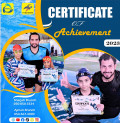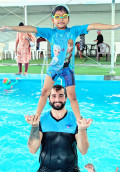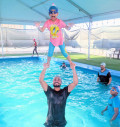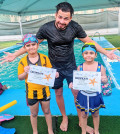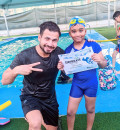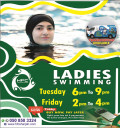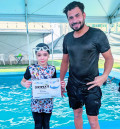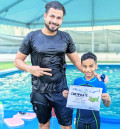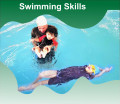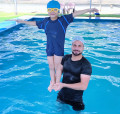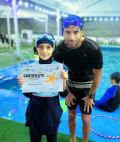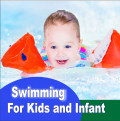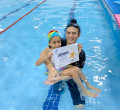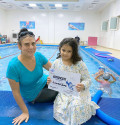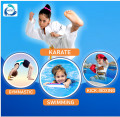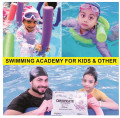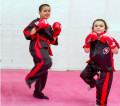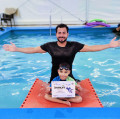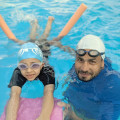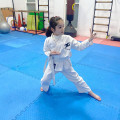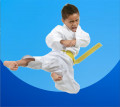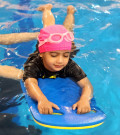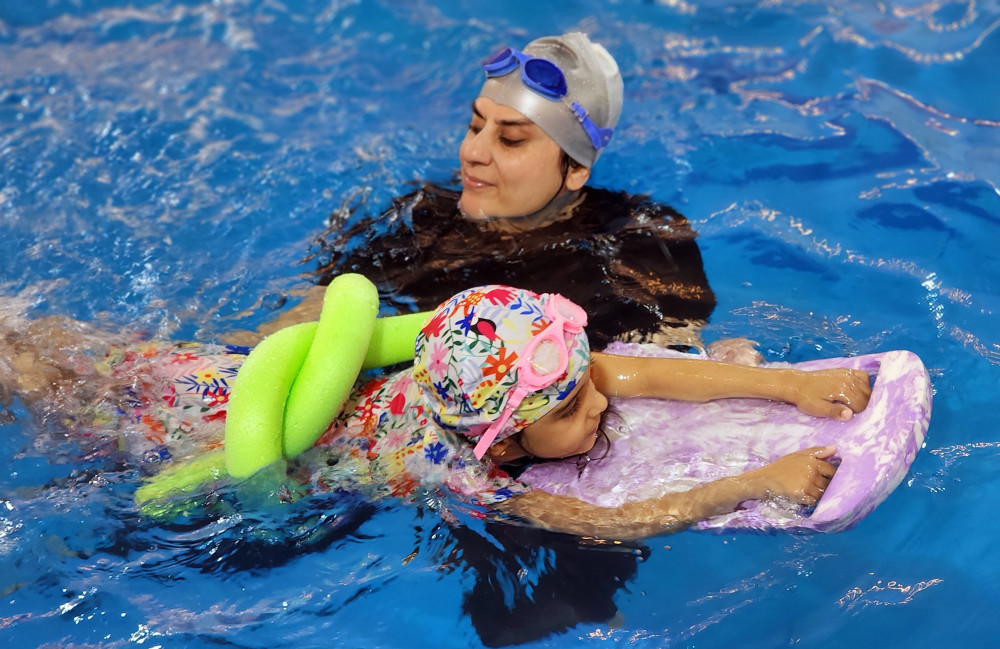
Swimming Steps for Beginners and Small Kids
2024-03-08 - swimmingSwimming is not only a valuable life skill but also a fun
and refreshing activity for people of all ages. For beginners and small kids,
learning to swim can be both exciting and daunting. However, with the right
guidance and approach, it can become a rewarding experience that fosters
confidence and aquatic safety. In this article, we'll explore the essential
steps and strategies for beginners and small kids to embark on their swimming
journey.
Introduction to Swimming for Beginners and Small Kids
Swimming is a skill that offers numerous physical and mental
benefits. For beginners and small kids, it provides an opportunity to develop
coordination, strength, and cardiovascular fitness while enjoying the water.
Additionally, swimming promotes water safety awareness and instills a sense of
confidence and independence.
Importance of Learning Swimming at a Young Age
Learning to swim at a young age is advantageous for several
reasons. Firstly, it reduces the risk of drowning accidents, which is a leading
cause of injury-related deaths among children. Secondly, starting early allows
children to overcome any fear or apprehension associated with water, making
them more comfortable and confident swimmers in the long run. Moreover,
swimming enhances cognitive development and fosters social interaction, as kids
often participate in swimming lessons or join swim teams where they interact
with peers.
Preparing for the First Swim: Essential Gear and Safety
Measures
Before diving into the water, it's crucial to ensure that
beginners and small kids are equipped with the necessary gear and safety
precautions. This includes properly fitting swimwear, swim goggles to protect
their eyes, and flotation devices or swim aids for added support. Additionally,
children should be taught basic water safety rules, such as never swimming
alone and staying within designated swimming areas.
Finding the Right Instructor or Swimming Program
Choosing the right instructor or swimming program can
significantly impact a beginner's swimming experience. Look for certified
instructors who have experience working with children and creating a positive
learning environment. Consider factors such as class size, teaching methods,
and safety protocols when selecting a swimming program for your child.
Getting Comfortable in the Water: Overcoming Fear and
Anxiety
Many beginners, especially small kids, may experience fear
or anxiety when first entering the water. It's essential to approach swimming
lessons with patience and encouragement, gradually acclimating children to the
water environment. Start with simple activities like splashing or playing games
in shallow water to help them feel more comfortable and relaxed.
Basic Swimming Techniques for Beginners
Floating Techniques
Floating is one of the fundamental skills in swimming and
serves as the foundation for many other strokes and maneuvers. Teach beginners
to relax their bodies and breathe deeply while lying on their backs or stomachs
in the water. Practice floating with the support of flotation devices or by
holding onto the pool edge until they gain confidence.
Kicking Techniques
Kicking helps propel swimmers through the water and is
essential for maintaining buoyancy and stability. Encourage beginners to
practice kicking while holding onto a kickboard or while floating on their
backs. Emphasize proper leg positioning and rhythmic kicking motions to
maximize efficiency and speed.
Arm Movement Techniques
Arm movements play a crucial role in various swimming
strokes, including freestyle, backstroke, and breaststroke. Teach beginners to
coordinate their arm movements with their breathing and kicking patterns,
ensuring smooth and efficient strokes. Start with simple arm exercises like arm
circles or reaching movements to build strength and coordination.
Building Confidence: Practice Makes Perfect
Confidence is key to becoming a proficient swimmer.
Encourage beginners to practice regularly and celebrate their progress and
achievements along the way. Offer praise and positive reinforcement to boost
their confidence and motivation, and provide opportunities for them to
challenge themselves and overcome obstacles.
Swimming Games and Activities for Kids
Making swimming fun and engaging is essential for keeping
beginners and small kids motivated and enthusiastic about learning. Incorporate
games and activities into swimming lessons, such as relay races, underwater
treasure hunts, or water polo. These activities not only improve swimming
skills but also promote teamwork, coordination, and creativity.
Understanding Water Safety Rules
In addition to learning how to swim, it's essential for
beginners and small kids to understand basic water safety rules. Teach them to
always swim with a buddy, never dive into shallow water, and always obey
lifeguard instructions. Emphasize the importance of staying vigilant and aware
of their surroundings while in or near the water.
Gradually Advancing Skills: Moving from Beginner to
Intermediate
As beginners become more comfortable and proficient in the
water, they can start to advance to more challenging swimming techniques and
strokes. Introduce skills such as treading water, diving, and flip turns to
expand their repertoire and improve their overall swimming ability. Provide
opportunities for them to set goals and track their progress as they move from
beginner to intermediate level.
Overcoming Challenges: Dealing with Frustration and
Setbacks
Learning to swim is not always smooth sailing, and beginners
may encounter obstacles or setbacks along the way. Encourage resilience and
perseverance by teaching them to approach challenges with a positive attitude
and determination. Offer support and guidance to help them overcome fears,
improve skills, and build confidence in their abilities.
Celebrating Achievements: Setting Goals and Tracking
Progress
Acknowledge and celebrate the achievements of beginners and
small kids as they reach milestones in their swimming journey. Set realistic
goals and benchmarks for improvement, such as swimming a certain distance or
mastering a particular stroke. Keep track of their progress and reward their
efforts with praise, encouragement, or small incentives to motivate them to
continue striving for success.
Importance of Consistent Practice and Improvement
Consistency is key to becoming a proficient swimmer.
Encourage beginners and small kids to practice regularly and participate in
swimming lessons or activities year-round. Consistent practice not only helps
reinforce skills and techniques but also builds endurance, strength, and
confidence in the water.
Encouraging a Lifelong Love for Swimming
Ultimately, the goal of swimming instruction for beginners
and small kids is to foster a lifelong love for the sport. Encourage them to
explore different swimming styles, participate in swim competitions or events,
and continue learning and improving their skills over time. Swimming not only
provides physical and mental benefits but also offers opportunities for
socialization, recreation, and personal growth.
Conclusion
Learning to swim is a valuable and rewarding experience for
beginners and small kids. By following the steps and strategies outlined in
this article, parents and instructors can help children develop essential
swimming skills, build confidence and safety awareness.







.jpg)




















